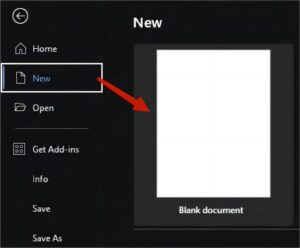Summary: Long bond paper offers a flexible and spacious format, ideal for detailed projects and reports. But when is it best to use this size, and how do you adjust the settings in Microsoft Word? Let’s explore the world of long bond paper.
Long bond paper is a widely used paper size in the Philippines and several other parts of the world. Known for its versatility and ample dimensions, long bond paper is favored for various applications ranging from legal documents to academic reports. This comprehensive guide delves into the details of long bond paper, including its dimensions, common uses, advantages, and a step-by-step printing guide using Microsoft Word.
Uses of Long Bond Paper Long bond paper is highly popular in educational institutions, legal offices, and various private agencies. Its extended length makes it ideal for printing an array of documents such as contracts, legal papers, business letters, and academic papers. Specifically, long bond paper is often used for printing forms and other official documents that require more space than standard paper sizes.
Additionally, long bond paper is utilized in printing books, manuals, and extensive documents that span multiple pages. Its larger size accommodates detailed information without the need for frequent page breaks or bindings.
Historically, the Philippine government relied on long bond paper for its official documentation needs. However, a significant change occurred on August 1, 1986, with the issuance of Joint Memorandum Circular No. 1, s. 1986. This memorandum mandated the standardization of writing paper size to A4 (210 mm x 297 mm) for all official communication and documentation. The transition aimed to enhance consistency and efficiency within government processes by adhering to metric measurements and international standards.
Dimensions of Long Bond Paper The dimensions of long bond paper are as follows:
- Inches: 8.5 x 13 inches
- Centimeters: 21.59 x 33.02 cm
- Millimeters: 215.9 x 330.2 mm
- Pixels: 2550 x 3900 pixels (at 300 DPI)
Long bond paper stands out due to its extended length compared to the standard A4 paper size, making it particularly suitable for printing lengthy documents that benefit from additional space.
Advantages of Using Long Bond Paper One of the primary advantages of long bond paper is its generous length. This feature allows for the printing of longer documents on a single sheet, reducing the need for stapling or binding multiple pages. This is particularly beneficial for legal documents, academic reports, and business correspondence, where a seamless flow of information is crucial.
Another advantage is the ample space available for printing tables, charts, and graphs. This makes long bond paper a preferred choice for business and academic documents that require detailed visual representations. The professional appearance of long bond paper also enhances the presentation of official documents.
Setting the Long Bond Paper Size in Microsoft Word
Printing a document on long bond paper can be challenging if Microsoft Word does not automatically include this paper size option. Fortunately, setting up long bond paper in Word is a straightforward process. Here’s a detailed guide:
- Open Microsoft Word: Start by creating a new document and navigating to the “Page Layout” tab at the top of the screen.
- Select Paper Size: Click on the “Size” button located in the “Page Setup” group.
- Choose Custom Size: If the 8.5″ x 13″ option is not available, select “More Paper Sizes.”
- Enter Dimensions: In the “Page Setup” dialog box, go to the “Paper” tab. Choose “Custom Size” and enter the following dimensions:
- Width: 8.5 inches
- Height: 13 inches
- Apply Settings: Click “OK” to save the custom paper size. Your document is now set up for long bond paper format, and you can start typing or formatting your document as needed.
Before printing, ensure that your printer supports long bond paper size. If not, you may need to adjust the paper size settings or use a different printer that can accommodate this size.
Standard Sizes of Bond Paper
Standard paper sizes can vary significantly by region and intended use, and the dimensions of coated paper may differ slightly across different countries and regions. Below is a comprehensive list of the standard sizes for bond paper, highlighting their specific applications and regional prevalences:
Letter Size (North America)
- Dimensions: 8.5 inches x 11 inches (21.6 cm x 27.9 cm)
- Usage: The most commonly used size in the United States, Canada, and Mexico, ideal for a wide range of printing and office applications.
Legal Size (North America)
- Dimensions: 8.5 inches x 14 inches (21.6 cm x 35.6 cm)
- Usage: This size is slightly longer than the letter size and is predominantly used for legal documents, contracts, and official correspondence in North America.
A4 Size (International)
- Dimensions: 8.27 inches x 11.7 inches (21.0 cm x 29.7 cm)
- Usage: The most widely used paper size globally, particularly in countries adhering to ISO 216 standards, including most of Europe, Asia, Africa, and Oceania. It is slightly narrower and longer than the letter size and serves as the standard for documents, letters, and general printing across many countries.
A3 Size (International)
- Dimensions: 11.7 inches x 16.5 inches (29.7 cm x 42.0 cm)
- Usage: Twice the size of A4, A3 paper is commonly used for posters, presentations, diagrams, and large-format printing. It is also part of the ISO 216 paper size standard and is widely used in countries that follow this standard.
Folio Size (Europe)
- Dimensions: 8.27 inches x 13 inches (21.0 cm x 33.0 cm)
- Usage: Predominantly used in Europe, this size is slightly longer than letter size. It is commonly utilized for printing documents, reports, and presentations.
Quarto Size (Europe)
- Dimensions: 8.46 inches x 10.83 inches (21.5 cm x 27.5 cm)
- Usage: Smaller than the A4 size, Quarto paper is often used for books, magazines, and pamphlets in Europe.
Foolscap Size (UK and Commonwealth Countries)
- Dimensions: 21.6 cm x 34.3 cm (8.5 inches x 13.5 inches)
- Usage: Historically used in the UK and Commonwealth countries, foolscap paper is slightly longer than A4 and is used for legal documents, letters, and office correspondence.
These paper sizes are standardized to facilitate consistency in printing and documentation across different regions and industries. Understanding these dimensions can help ensure that your documents meet the required standards for any specific application or geographic location.
Long Bond Paper vs. Letter vs. Legal vs. A4
There are notable differences between long bond paper and other common paper sizes, which cater to various application scenarios. Below is a comparison of long bond paper with other standard paper sizes:
| Paper Type | Dimensions |
|---|---|
| Long Bond Paper | 8.5 inches x 13 inches |
| Letter | 8.5 inches x 11 inches |
| Legal | 8.5 inches x 14 inches |
| A4 | 8.27 inches x 11.7 inches |
Why Choose Long Bond Paper?
Extra Space: The most significant advantage of long bond paper is its length, which provides more space for printing. This is particularly useful for documents that require additional room for detailed content, such as reports, books, and extensive presentations.
Complex Content: For work reports or presentations with intricate details, the additional length of long bond paper allows for comprehensive content accommodation without the document becoming excessively long, as can happen with legal-sized paper.
Large Charts and Diagrams: Long bond paper is ideal for projects that include large charts or diagrams. Its extended length reduces the need for multiple sheets or content reduction, facilitating better readability and presentation.
Overall, long bond paper is a versatile choice for various applications requiring additional space and a professional appearance.
Conclusion While long bond paper is widely used in the Philippines and some other countries, it is not the standard paper size internationally. When dealing with international businesses and organizations, it is important to verify the appropriate paper size for specific documents to ensure compatibility and professionalism.
In conclusion, long bond paper is a versatile and reliable paper size, ideal for printing lengthy documents such as legal papers, business letters, and academic reports. By following the guidelines provided in this article, you can easily set up the long bond paper format in Microsoft Word and adjust your printer settings accordingly. This will enable you to produce professional-quality documents with ease, leveraging the advantages of long bond paper for your specific needs.



